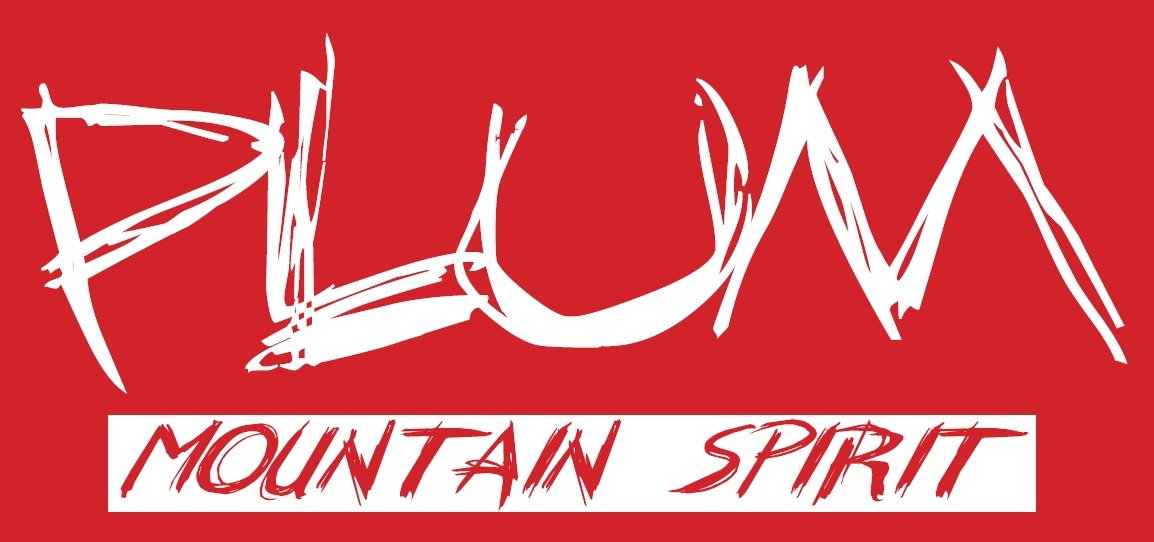2013 Alyeska Climbathon
 Tuesday, September 24, 2013 at 02:23AM
Tuesday, September 24, 2013 at 02:23AM  Plan, prepare, execute. That was my approach to last week’s Alyeska Climbathon. It went ridiculously to plan and almost went even better than I could’ve hoped…almost.
Plan, prepare, execute. That was my approach to last week’s Alyeska Climbathon. It went ridiculously to plan and almost went even better than I could’ve hoped…almost.
I apologize for taking so long getting this out. I was pretty crushed after the event, utterly drained and I even caught a nasty cold for my effort. Sucked heavily. With empty legs and a stuffy head I wasn't in mood to write anything. Onward.
As I mentioned in the previous post, I was hoping to climb 12 laps up the North Face Trail at Alyeska in the allotted 10 hours. That’s exactly what I did, nearly catching the winner in the process. I finished 12 minutes behind him but that margin doesn’t tell the whole story, that I reclaimed the full lap on him that he took halfway into the day.
After weeks of rain, race day dawned clear with the promise of good weather throughout the day. I was as ready as I could be, well rested and confident of my feeding strategy. I knew exactly what my pace needed to be. At the check–in, Barney Griffith materialized as a late entry and I immediately felt like I lost a finishing place to him.  Barney at Mount Marathon a few years ago.Barney, at 55 years of age, is an Alaskan mountain running legend, still able to keep up with guys half his age and always finishes in the top 10 of well-attended shorter races. He typically kicks my ass. Either way, he added a level of complexity I wasn’t expecting.
Barney at Mount Marathon a few years ago.Barney, at 55 years of age, is an Alaskan mountain running legend, still able to keep up with guys half his age and always finishes in the top 10 of well-attended shorter races. He typically kicks my ass. Either way, he added a level of complexity I wasn’t expecting.
Some of the other players from last year were present in addition to several new faces. The relay event lured more runners this year, bringing about 250 total racers. The big story was Brent Knight, an uber talented Nordic skier from Anchorage and winner of the Tour of Anchorage this past winter. He runs well and might even have a little sponsorship from Salomon. I spoke to him the week before the event and he indicated he was gunning for 15 laps. I gave him a blank look when he said that but quickly recovered saying, in as positive a tone as possible, that he was ambitious. He countered with youthful confidence saying he was game to try, while recognizing that a similar goal of Matt Novakovitch’s last year ended with an impressive implosion and near DNF. I seriously had my doubts about Brent’s plans, having dissected the event with obsessive scrutiny, but was going to enjoy the spectacle, successful or not.
And we’re off…
After the start, the lead pack settled in to a comfortable pace with Brent and his pacer getting out in front by 100 meters as the real climbing started. I dropped into 6th or 7th and tried to keep my HR down into my planned zone. I was mostly successful. A couple of teenagers nearby kept screwing me and I had to goose it to get out ahead of them before the steep stairs, knowing that terrain suits me more than it would them with their shorter legs. I pulled ahead. It really didn’t matter, though, since the first tram wasn’t heading down until 40 minutes after the start. We all finished around 36 minutes, located our food bags that were transported to the top ahead of time and got our first feed organized.
 The first download was surprisingly full with several fit looking teenagers and a few strong women. Very different from last year. We hit the bottom and started lap 2 with a nice sized pack. This quickly dispersed but Barney, Todd Borke and I seemed almost locked in step which remained the case for 6 laps. Those two were more comfortable on the initial running section, about 7 minutes, but I was quickly on their heels as the hiking started. I was intimidated listening to them converse easily as I ran behind them mouth breathing. I tried to remember it was a long race.
The first download was surprisingly full with several fit looking teenagers and a few strong women. Very different from last year. We hit the bottom and started lap 2 with a nice sized pack. This quickly dispersed but Barney, Todd Borke and I seemed almost locked in step which remained the case for 6 laps. Those two were more comfortable on the initial running section, about 7 minutes, but I was quickly on their heels as the hiking started. I was intimidated listening to them converse easily as I ran behind them mouth breathing. I tried to remember it was a long race.
The laps passed and others slowed. I was psyched to see my lap times stay steady, slowing very gradually, as hoped, instead of precipitously.5 down. 7 to goThe rubber band started stretching. I had a feeling I was going to be free of the others by lap 7. Meanwhile, Brent lapped all of us by lap 5 but looked like death doing so. My impression at that point was that his pace was unsustainable. When we started up the next lap, we ended up passing him and I didn’t see him again. Rumors swirled for the next few hours that he was done or dropped out or needed long rests. Some were true but he finished with stubborn persistence, in spite of being severely over extended. He salvaged the win.
For me, I was happy to see last year’s cramping stay at bay until the last two laps. I like to blame that on the weight training I’ve done all year. My legs were stronger. I still cramped on the last lap any time I tried to speed up significantly but by then the deal was sealed. My hopes of catching Brent faded as I realized there would be no acceleration. But how sweet that would’ve been.
Pacing
Todd Borke had the tram timing to a science and shared his insight with Barney and me as we ascended. Although I enjoyed gapping my competitors I’m not sure having an extra few minutes at the top was worth the energy expended to get there. It didn’t get me on an earlier tram so I think I was burning matches unnecessarily. I’ll play it differently next year. Nonetheless, I was able to relax a bit at the top and none of my feed transitions were frantic, unlike some others’ who blasted through and at least one who missed his feed to make the tram.
 The HR data is informative. The expected drift down over time is apparent. The drop off is much less dramatic than last year. My average HR was higher this year. A few stabs into threshold HR are apparent. I went slightly harder overall than I planned but my RPE was where I wanted it. I tolerated the pace well.
The HR data is informative. The expected drift down over time is apparent. The drop off is much less dramatic than last year. My average HR was higher this year. A few stabs into threshold HR are apparent. I went slightly harder overall than I planned but my RPE was where I wanted it. I tolerated the pace well.
Splits
I was more disciplined this year with my watch and remembered to do splits for each lap. You can see each work lap and each transition. I never missed a tram. I was able to fish out my lap times from last year and I was consistently faster for the first few laps this year and then dropped off more slowly compared to 2012. 

 I can’t tie these trends to any one factor. Better rested, better fitness, better pacing, better feeding or just a better day are all in the running.
I can’t tie these trends to any one factor. Better rested, better fitness, better pacing, better feeding or just a better day are all in the running.
Nutrition
 As planned, I was Gu fueled the whole way. I used a 10-ounce flask with 6 gels and water and tried to make each flask last 3 laps or about 2 hours. I added a couple of packets of Chomps to make up the slight difference at the end of each triplet. My first two flasks were caffeine-free, the third with about 120 milligrams and the fourth contained caffeinated and non-caffeinated Roctane gels, probably about another 120 milligrams. I drank approximately 6 ounces of water at each lap, heeding Tim Noakes’ advice to not over hydrate. It was perfect. I was never hungry or thirsty, I never bonked and my stomach stayed calm. I ate exactly 2,900 calories. Counting the small amount of food in my belly at the start, I was right on my 300 calorie/hour plan.
As planned, I was Gu fueled the whole way. I used a 10-ounce flask with 6 gels and water and tried to make each flask last 3 laps or about 2 hours. I added a couple of packets of Chomps to make up the slight difference at the end of each triplet. My first two flasks were caffeine-free, the third with about 120 milligrams and the fourth contained caffeinated and non-caffeinated Roctane gels, probably about another 120 milligrams. I drank approximately 6 ounces of water at each lap, heeding Tim Noakes’ advice to not over hydrate. It was perfect. I was never hungry or thirsty, I never bonked and my stomach stayed calm. I ate exactly 2,900 calories. Counting the small amount of food in my belly at the start, I was right on my 300 calorie/hour plan.
This strategy is so bomb-proof and so effective it boggles my mind that others fail to adopt similar plans. But they don't and continue to eat a witchs' brew of bars, french fries, soda pop, bagels and other random foods that "taste good". Hey, if I wanted to enjoy my food I certainly wouldn't be walking up a damn hill for 10 hours. I'd be in the bar at the top quaffing beer and pounding Kobe beef burgers and truffled fries.
I think athletes need to get over the "food as pleasure" thing in relatively short events like this. You need to simply treat this stuff like fuel and keep it at that. The gut thing can be problematic but most sufferers have never trained their bellies to perform on gels and blocks. Once the adaptation is complete, there's no question these products are more quantifiable and predictable than random solid food. I almost feel guilty sitting in the tram on each ride down having just swallowed what I need for the next lap while others are busy chewing and swallowing crazy shit like sandwiches and beef jerkey. I can't imagine that stuff feels so hot as they start running the next lap. Burp!
Next Year
At first I thought I’d had enough of this course. I accomplished my goal of 12 laps and watched another talented, if not over ambitious athlete, burn in trying to get more than that. I doubt I can do more. I finished 12 laps in 9:48. It seems unlikely that I could take 5 minutes off each lap to gain another. That’s likely a pace for younger and more talented individuals. Next year, I’d like to see those guys go for 13 instead of 14 or 15. The price is high for failing. Honestly, I never want to feel like they look. Get 13 and then we can talk about more. Baddass, for sure. I might be back to watch. It’s fun being in the mix and seeing the day play out for everyone. Like I said before, it’s a fascinating study in pacing and fueling.
2013 Alyeska Climbathon Results



 Brian |
Brian |  9 Comments |
9 Comments | 





Reader Comments (9)
How cool Brian! A huge congrats and an equally huge thank you for posting all of your stats. Well done! Inspiring stuff sir.
Thanks Nick. Probably doesn't mean much to all who visit these pages but I know the data is interesting to geeks like me. Love running these "experiments".
Nicely done Brian. Some serious self control in effect to get those stats. Pretty fun to see your plan work so well, congrads!
Tell me about it, Dane. I've been talking about this plan all summer, sort of putting it out there for all to see and know. Very satisfying to have it come together like that without a hitch. Nice to be lucky once in awhile.
Ha! We both know luck pays only a tiny, tiny part of that kind of effort. Yes the stars must align and no twisted ankles or stubbed toes at the wrong moment. But as you said previous....that effort was years in the making. Give yourself some credit and enjoy that next beer :)
And why do I think Barney burnt that match early on just to put the hurt down early :) Some serious strategy going on there as well I bet. Remind you at all of bike racing?
Well, if that was what he was doing he paid for it dearly. I'll admit that the most satisfying thing about these longer events is sticking to my guns and watching the rabbits come back to me. So damn satisfying! I may not get the satisfaction of driving the sword into the hilt. Rather I get to sit back and smile just a bit as they fall on the sword themselves.
Whoah, huge congrats, and what a cool race format also!
(We have two trams in New England that would be perfect for this.)
Technical question:
"Counting the small amount of food in my belly at the start, I was right on my 300 calorie/hour plan."
- So essentially the equivalent of a Gu packet every 20 minutes.
- I go for a Gu packet every half hour ("Gu-o'-clock" and "Gu-thirty" as my partners call it). I thought anything more might exceed what my 145lb body can turn into fuel in the field?
- More generally, do you agree with the 3rd paragraph here?http://www.hammernutrition.com/hnt/1273/ ... I'm in between the two weight ranges, so I've always thought that 200/hr was about right.
- Googling around now, I was surprised to see a much lower range here: http://firstendurance.com/2010/06/30/how-many-calories-can-i-consume-per-hour/
Thanks, and also, love those comments about eating pleasure food! (Slurping Gu all day in the field just makes the drive back home with normal food all the more enjoyable...)
JS,
Thanks for the props. It was a great day. Funny, I saw some video of some of the others on the tram late in the race and they did not look well. Several people commented how "normal" I looked. I think this was completely due to pacing and nutrition. I was never extended and I maintained my fuel intake. Easy as pie.
As for your questions regarding calories/hour, I try to shy away from hard rules. Getting overly precise is likely not necessary. There are simply too many variables during a long day that impact fuel needs and utilization. You can only hope that you get close to what you need.
With that in mind, the 200-300 cal/hr rule works great. Study after study and anecdotal reports from thousands of endurance athletes confirm this amount. Most importantly is to figure this out during training. 'Nuff said on that.
I've always had issues with Hammer's marketing propaganda. Clearly, their whole take on carbohydrate ingestion during exercise deviates from accepted wisdom. I suspect it's simple marketing angling. Pah! This is also obvious in their pushing of electrolyte supplements when most of the current research does not support their use. Most of these companies are guilty of this. Tim Noakes' research would put most of these products in the hopper. One thing's for sure, this stuff has nothing to do with cramping.
Also interesting to note is Hammer's aversion of solid food. While I agree that liquid or semi liquid diets work great during exercise, you'd be hard pressed to find any pro cyclists not wolfing down all kinds of solid goodies during their arduous events.
Thanks, that definitely makes sense.
My experience with solid food is that after five hours my tummy just feels so empty, even if my blood sugar is okay. So once I've gone five hours after my last solid food back in civilization, I switch to half an Odwalla bar every half hour, until I've finished two bars.